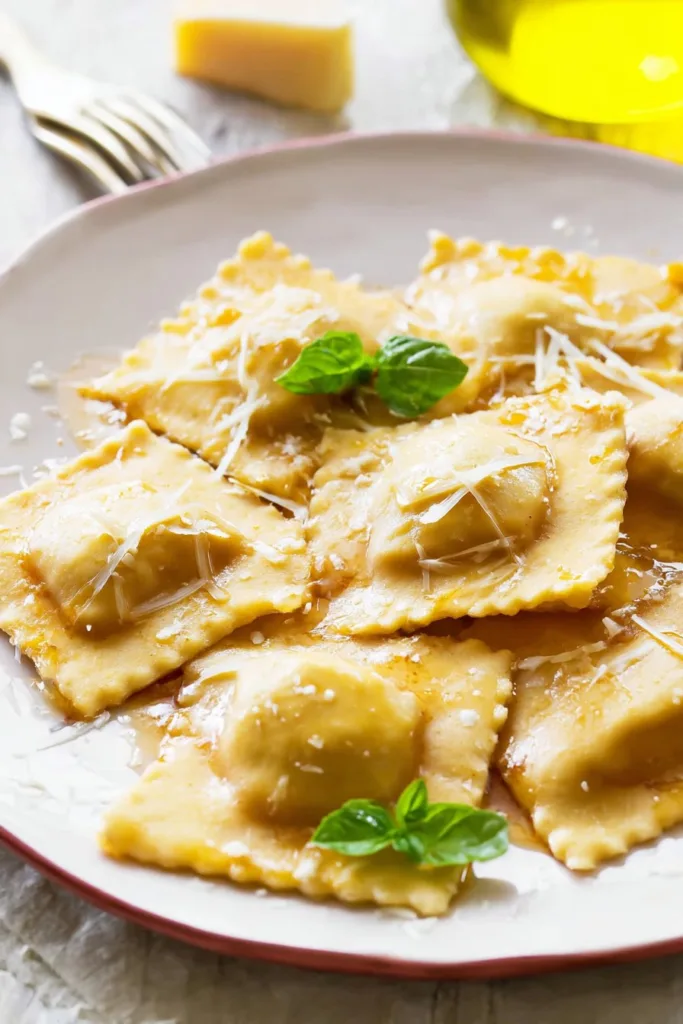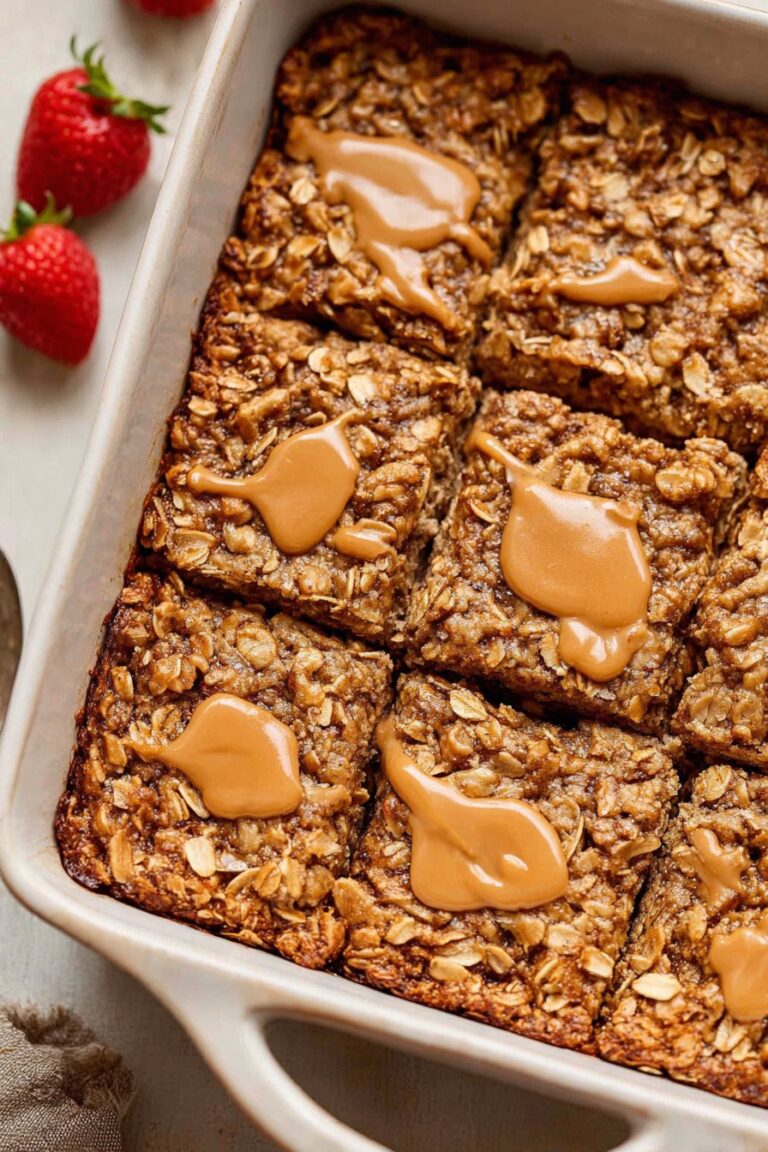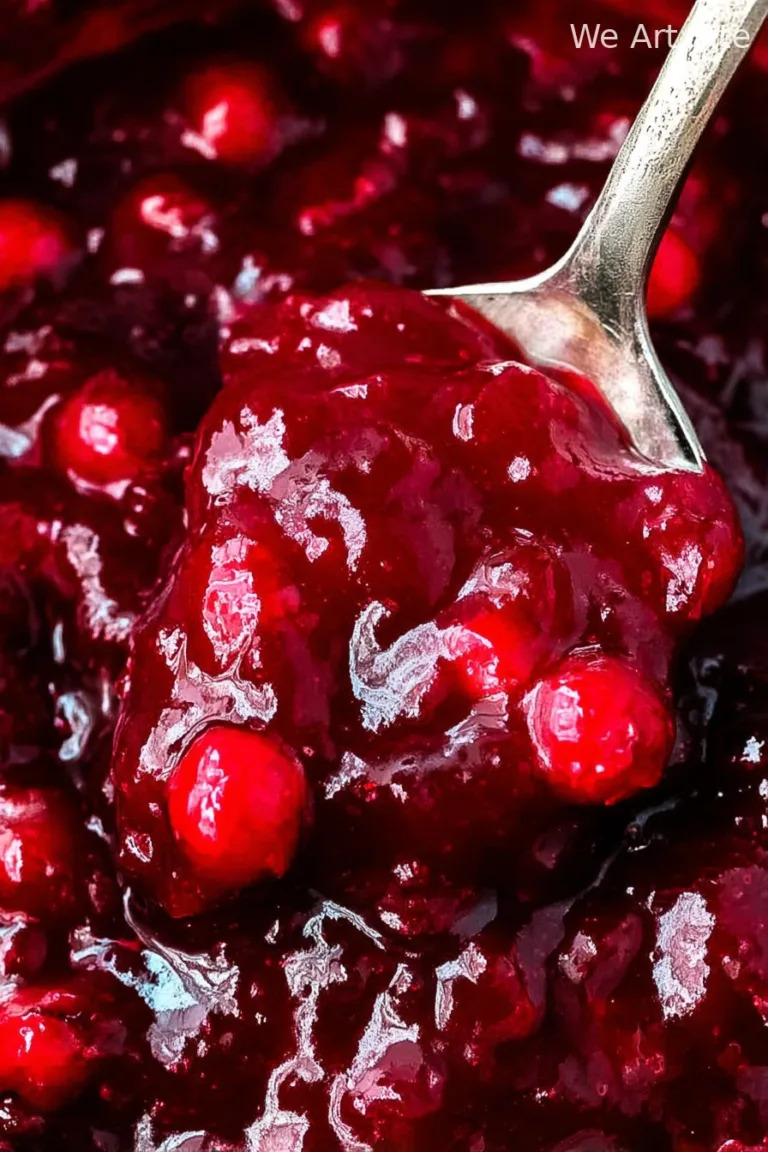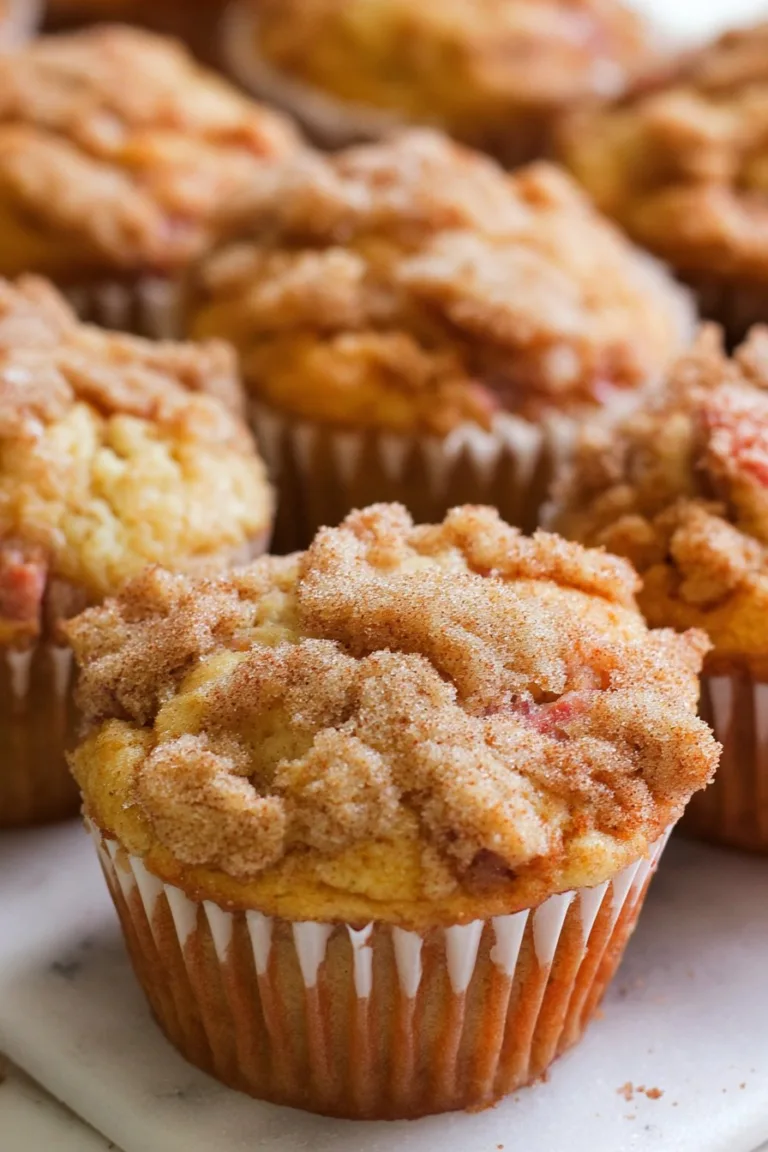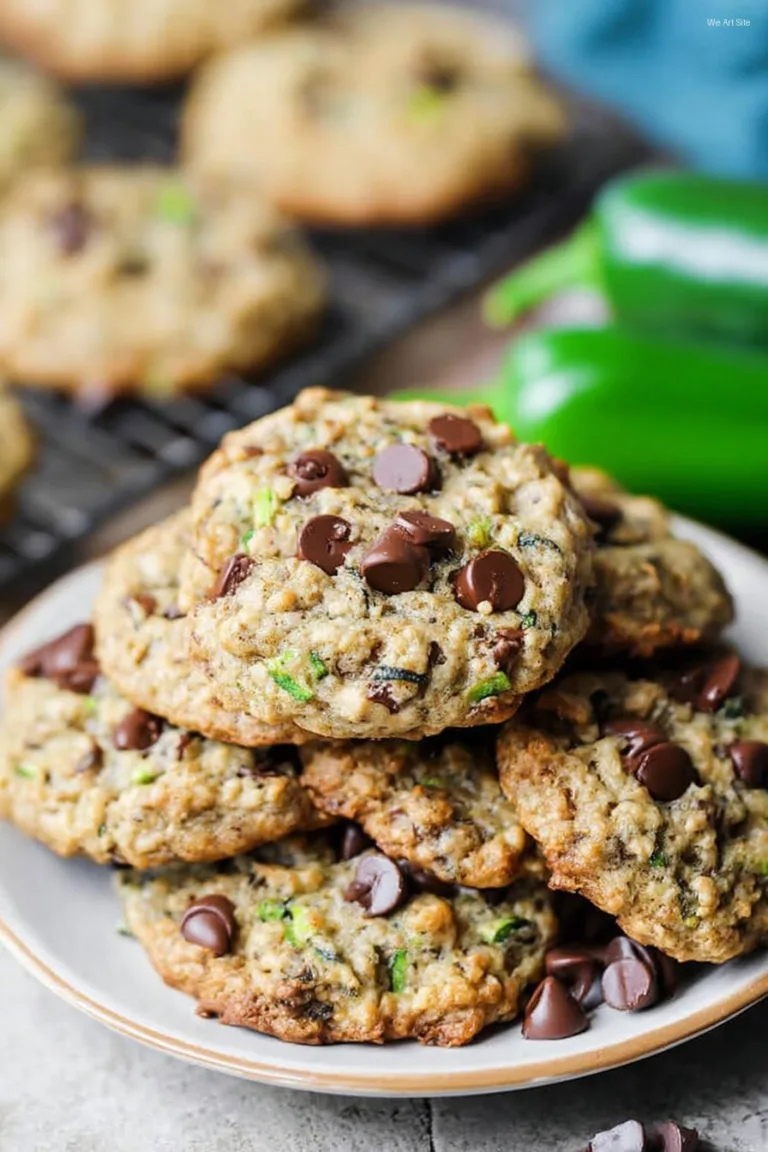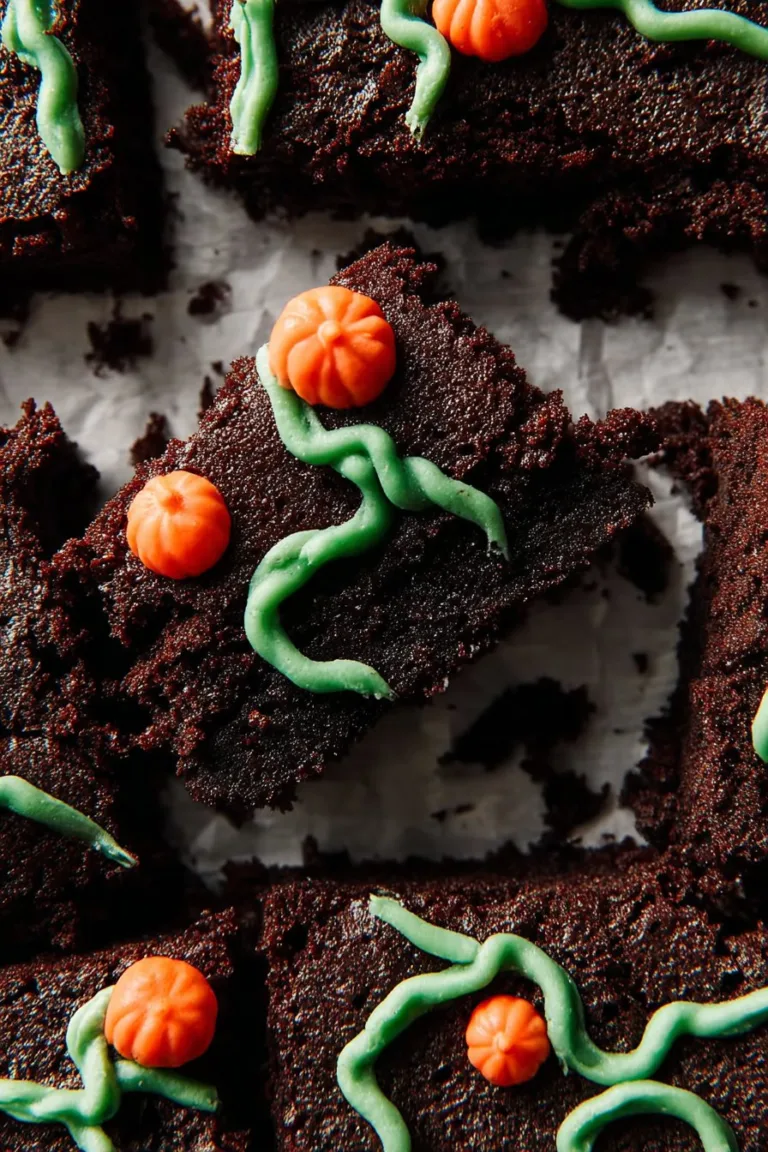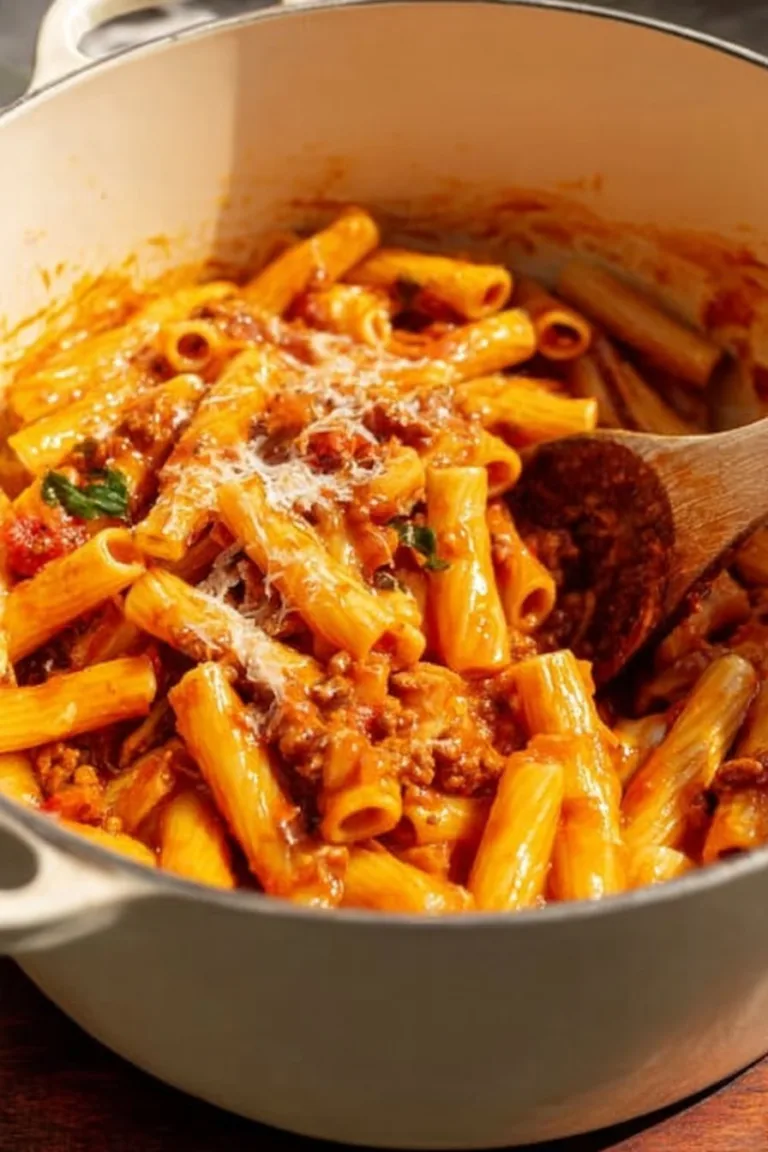If we were neighbors, I’d probably show up at your door with a little container of these gluten free ravioli and say something like, I made too many again, please take some before I eat them all. The first time I tried Gluten-Free Ravioli, I was nervous, like meeting a friend of a friend who’s supposedly spectacular. Turns out, it’s friendly dough that just wants a little patience and a snug seal. Also, note to self, don’t sneeze into the rice flour. Did that once; looked like a snow globe.
And can I confess a tiny digression before we start. My basil plant has a mind of its own. It leans toward the sunny window like it’s reaching for Italy, which feels on-brand for pasta night, so I let it be.
Why you might make this on a Tuesday
I make this when the week feels wobbly and I need a small win that smells like butter and garlic. My family goes a bit bonkers for it because the pasta is tender and the filling is creamy without being heavy. Also, I finally figured out why a few used to burst in the pot, and I promise we’ll dodge that (I was sealing too close to the filling, classic me). If you’re craving comfort but want to keep it gluten free, this is our lane. And yes, I’ve made a batch at 9 pm because I couldn’t stop thinking about it. No regrets.
What you’ll need, plus the swaps I actually use
For the dough
- 200 g gluten free all purpose blend, ideally one with xanthan gum. I like King Arthur’s blend right here, but use what you have
- 50 g tapioca starch for stretch
- 1 tsp psyllium husk powder for strength (if your blend is sturdy you can skip, but I tend to think it helps)
- 1/2 tsp fine salt
- 2 large eggs, room temp
- 1 tbsp olive oil
- 1 to 3 tbsp warm water as needed, a splash at a time
For the filling
- 1 cup whole milk ricotta, drained if watery (I sometimes use cottage cheese blitzed smooth when I’m in a hurry)
- 1/2 cup finely grated parmesan or pecorino
- 1 cup cooked chopped spinach, squeezed dry. Frozen is fine
- 1 egg yolk
- 1 small garlic clove, grated
- 1/4 tsp nutmeg, a pinch really
- Salt and pepper to taste
For cooking and finishing
- Sea salt for the pot
- 2 tbsp butter, plus a splash of pasta water
- A handful of fresh basil or parsley, torn
- Lemon zest, optional but lively
Substitutions I actually make
- No psyllium at home. Add 1/2 tsp xanthan gum instead, or use a blend that already includes it. This quick explainer helped me not overdo it
- Dairy free filling. Use almond ricotta and dairy free parmesan, plus a drizzle of olive oil for richness
- Spinach swap. Sauteed mushrooms with thyme are dreamy; just cook off moisture so they don’t make the filling soupy
- My grandmother always insisted on a certain brand of ricotta, but honestly any decent one works fine if you drain it
Let’s make the dough without overthinking it
- In a bowl, whisk the flour blend, tapioca, psyllium, and salt. Make a little well. Add eggs and olive oil to the center. Using a fork, start whisking the eggs while pulling in flour, then switch to your hands. Add warm water a teaspoon at a time until it forms a slightly tacky ball. Not sticky, just a gentle cling
- Knead on a lightly floured board for about 3 to 4 minutes. It won’t get super springy like wheat dough, that’s okay. Smooth-ish is the goal
- Wrap and let rest 20 minutes at room temp. If you forget and only rest 10, it still behaves, but actually, I find it works better if you give it the full rest
Filling time
- Stir ricotta, parmesan, spinach, yolk, garlic, and nutmeg in a bowl. Season with salt and pepper. Taste. This is where I usually sneak a taste and then remember it’s raw yolk, so just a teeny bit
- If it seems loose, add a spoon of parmesan. If too stiff, a drizzle of olive oil does the trick
Roll, cut, fill, seal, breathe
- Divide dough in half. Keep one half wrapped. Either use a pasta machine on medium thin or a rolling pin with patience. Start wide and work to thin. You’re aiming for about 1 millimeter, you can almost see your hand through it. Don’t worry if it looks a bit weird at this stage, it always does
- Lay a sheet on the board. Pipe or spoon teaspoon mounds of filling every few inches. Brush around each mound with a little water
- Top with the second sheet. Press out air around each mound with your fingers, then seal firmly. Cut into squares with a knife or a pizza wheel. A fluted cutter is cute, but a regular knife is perfectly fine
- Double check the seals. Pinch them like you mean it. I used to seal too close to the filling and they would pop. Leave a small border
If you want a visual walk through, this step by step from The Kitchn is very handy: how to make ravioli. Also, there’s useful info on safe gluten free choices at the Celiac foundation if that’s important in your kitchen: what is gluten.
Cooking without casualties
- Bring a big pot of salted water to a gentle boil. More like enthusiastic simmer than rolling waves
- Drop in a few ravioli at a time. They sink, then float when nearly done. Cook 3 to 4 minutes total, depending on thickness
- Meanwhile, melt butter in a wide skillet. Add a splash of pasta water. When ravioli are done, transfer gently to the skillet. Toss. Add herbs and a bit of lemon zest. Taste for salt. Eat one, purely for science
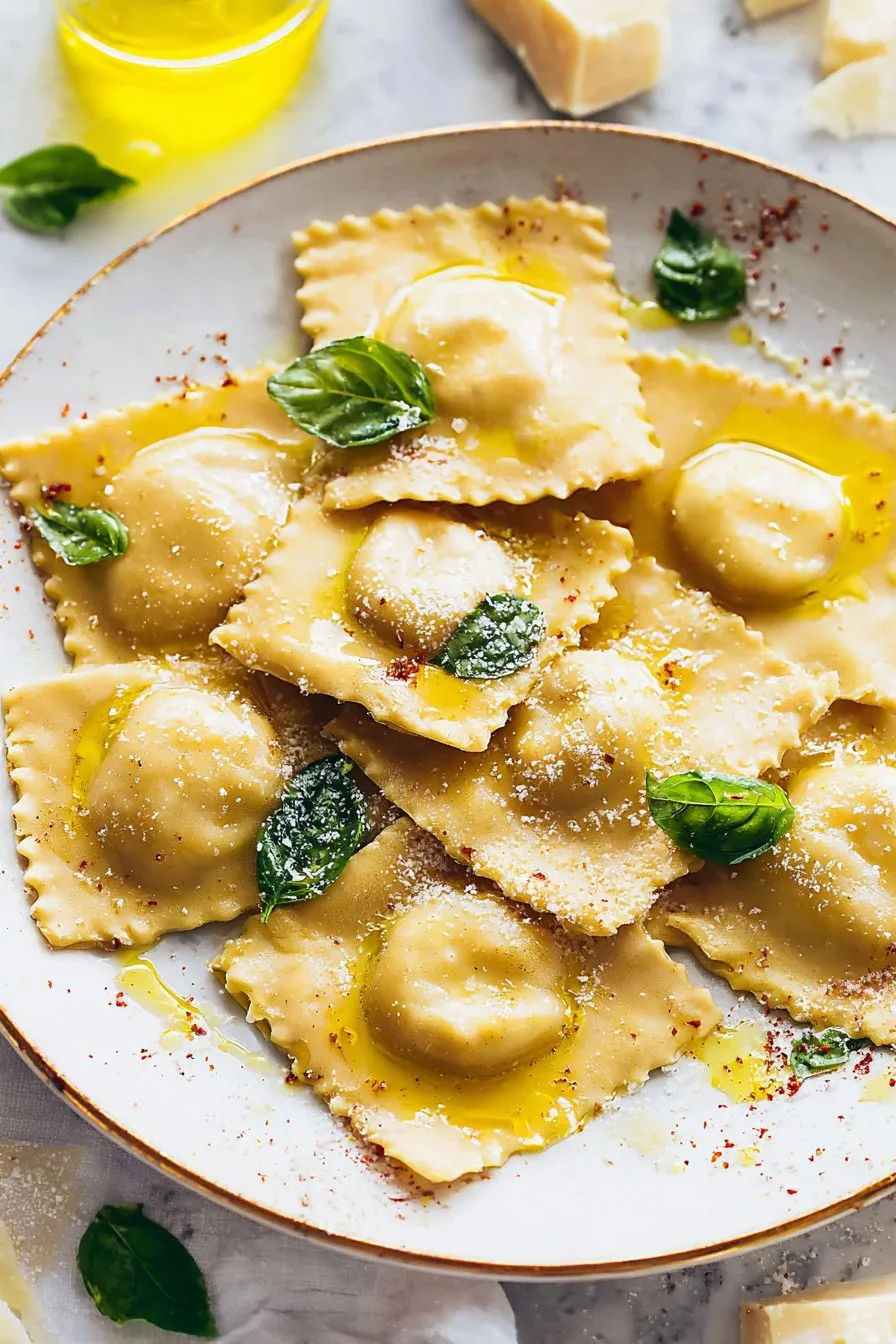
Notes I learned the slightly messy way
- If the dough cracks when rolling, it probably needs a tiny splash more water. Wet hands, not the dough, and knead it back together
- Flour your board lightly and often. Too much flour and the dough goes dry on you, too little and you’ll wrestle it like a stubborn cat
- Let the filling be quite thick. Loose filling tries to escape, and we’re not running a jailbreak here
- Different gluten free blends behave differently. If yours has no xanthan, add some or psyllium. On second thought, test a small batch first and see how it rolls
Variations I’ve actually tried
- Brown butter and sage with pumpkin filling. Swap spinach for one cup pumpkin puree, add a bit more parmesan and a pinch of chili flakes. Gorgeous
- Mushroom and thyme with a splash of cream. Saute mushrooms till deeply browned, chop, and fold into ricotta
- Goat cheese and lemon. Sharp and bright, weekend lunch vibes
- The one that didn’t quite work. I tried a roasted beet filling that looked stunning but tasted a bit earthy in a way that fought the pasta. Pretty, not a keeper for me
Gear that helps, plus proper cheats
- Pasta machine makes rolling consistent and quick, I’d call it essential for tidy rows
- But also, if you’ve only got a rolling pin, no worries. Roll smaller pieces and take your time. A wine bottle works in a pinch, I’ve done it and survived
- Bench scraper for moving dough and cleaning the board
- Small round cutter or a drinking glass for neat edges, or just a knife if you like rustic
How I store leftovers
Uncooked ravioli freeze beautifully. Arrange on a lined tray, freeze till solid, then bag. Cook from frozen, add an extra minute or so. Cooked leftovers keep in the fridge about two days, splash with water when reheating so they don’t get stodgy. Though honestly, in my house it never lasts more than a day.
Serving ideas we come back to
- Simple butter and herbs, always
- Quick tomato sauce with garlic and a pinch of chili. I think this tastes even better the next day
- A cheeky drizzle of good olive oil and lemon, plus a snowy heap of parmesan
- Side salad with sharp vinaigrette to balance the cozy
Pro tips born form my mistakes
- I once tried rushing the rest time and regretted it because the dough tore like wet paper. Give it that short rest
- I salted the filling too late and it wept. Season, then wait a minute, then adjust, so you don’t end up with watery ricotta
- Don’t stack raw ravioli without flouring generously or parchment between layers. Ask me how I know
- Keep the pot at gentle boil. A wild boil bashes them about, and they’re delicate souls
FAQ I actually get
Can I make the dough ahead
Yes, wrap and chill up to one day. Let it warm on the counter so it rolls nicely. If it feels stiff, knead in a few drops of warm water
What if I don’t eat eggs
You can try an egg free dough with extra psyllium and warm water, but texture gets a bit different. I’ve done it and it works, just less rich
How do I stop them from bursting
Leave a clear border, press out air before sealing, and don’t overfill. Also, gentle water, not a raging boil
Can I bake ravioli instead of boiling
For this dough, boiling then finishing in sauce is best. Baking raw tends to dry the edges before the center cooks
Which sauce is best
Butter and herbs for delicate fillings, tomato when you want a bit of zip. Pesto is lovely too, just loosen it with pasta water
Is oat flour safe
Use certified gluten free oats only. If you’re cooking for someone with celiac, double check labels and your tools
Alright, that’s dinner. If you make it, tell me what filling you went for, and whether one escaped and did a tiny pasta sprint across your counter. It happens to the best of us.

